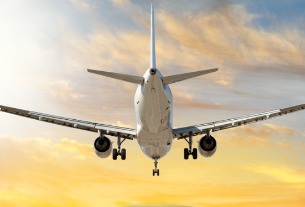Published: 29 Feb 2008:The Middle East region is poised to redefine global aviation, as local carriers and airports undergo massive capacity expansion and foreign airlines establish in the region.
This viewpoint has been shared by Centre for Asia Pacific Aviation´s (CAPA) executive chairman Peter Harbison.
"`Next-Gen aviation´ is an amalgam of airline, airport and coordinated policy leadership which makes possible the rapid growth of air services and passenger travel through the Middle East at long term rates previously believed to be achievable only over short periods", according to Harbison.
According to CAPA, over US$50 billion is being spent on Middle East airport infrastructure.
As per the information available with EyeforTravel, in 2012, the 10 leading airports in the region will have a combined capacity of 320 million passengers. The IATA forecast—based on airline expectations—projects 160 million passengers. Even if airlines in the region captured the entire Asia-to-Europe market that would only add another 110 million passengers. Filling up the aircraft and airports of the future will be critical, according to the industry experts.
With international arrivals in the Middle East witnessing tremendous growth rates, as a result the region´s governments are investing massively in new systems and infrastructures to improve the airlines and airports services, standards, capacity and business continuity.
The Association also highlighted that a handful of Gulf airlines have order books that strike fear among some of the oldest and strongest names in the business – over US$50 billion in aircraft orders last year alone, most of them for twin-aisle, long-haul equipment. And, as liberalisation sweeps through intra-Middle East aviation, there will be more to come, from established flag carriers too.
Vitally, this region is ideally placed geographically to derive the greatest value from a new generation of extra-long range aircraft, making one-stop travel possible between any two points on earth via this region – and this region alone.
"All of this coalesces at an important fragment in time, just as the archaic regulatory environment is about to be swept away", said Mr Harbison.
Removal of unnecessary constraints on market entry by airlines – imposed over half a century ago and which have since been maintained only to protect usually-inefficient national airlines – is a vital feature of the Next-Gen aviation structure which characterises the Middle East today.
"What we are witnessing is a change of seismic proportions, not merely an evolution that can be tracked by traditional measures. For we will see not only the rapid fire growth of locally based airlines; we will also see major foreign airlines establish in the Middle East, in order to use it as a springboard for their future development. Under the emerging regulatory regimes, this will be possible, where it was not before," said Harbison.




